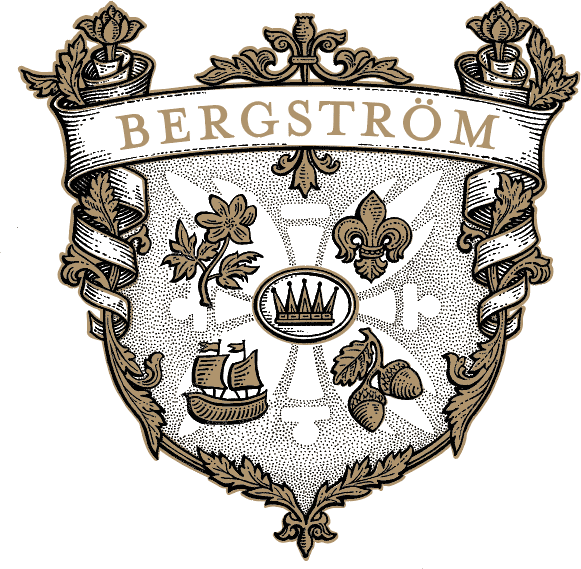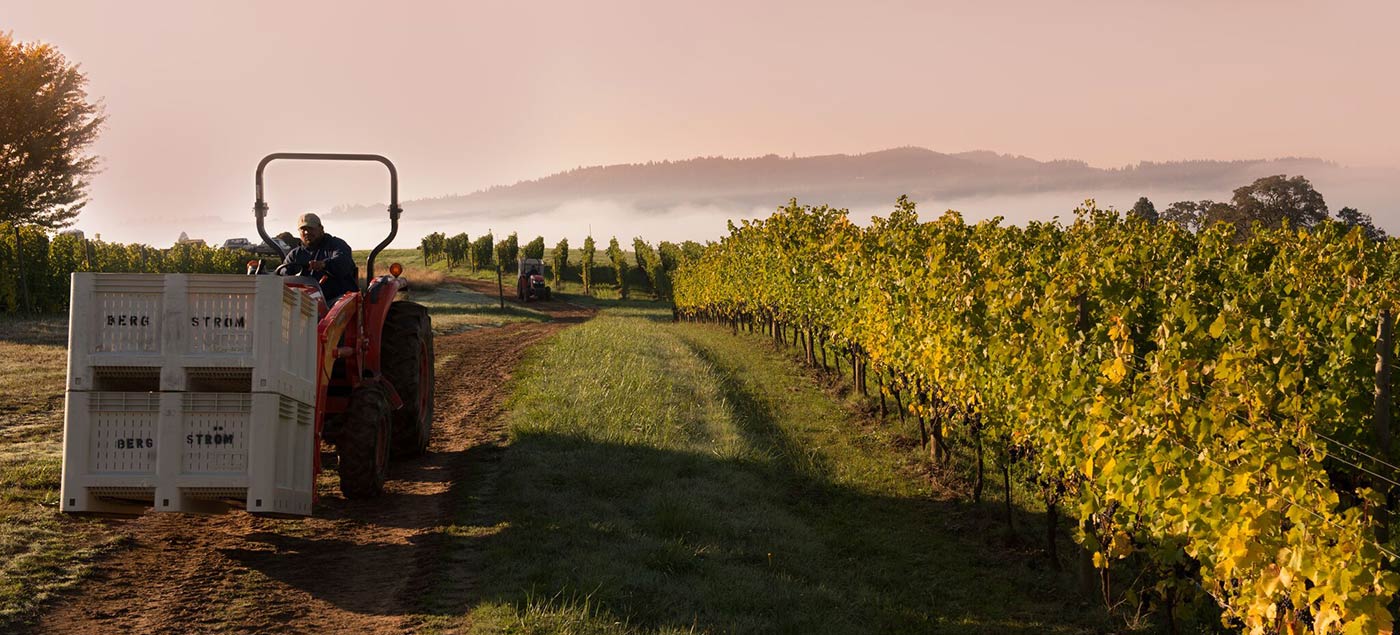Balance….. easier said than done. Finding true balance in our lives is difficult to do, what with all of the distractions and temptations and the noise of everyday life. Life seems to swing more like a pendulum with the moments of balance being short, sweet and fleeting. It is just as difficult to achieve balance when making wine but this simple word has become a revolutionary word in the wine world as of late.
If you are always chasing a fad or a fashion in wine, you will never find balance. If you make wine for glossy magazines and not for yourself, then you will never find balance. When you lean too far in one direction, by definition, you are out of balance. From balance comes consistency and longevity and that is the ultimate goal in wine from my standpoint. With balance you stand solidly for something.
During my last two weeks in France this summer, I found two Domaines who balance their wines very well albeit they come from two totally different ends of the scale.
If you have ever driven past the Mont St. Victoire when the Mediterranean sunrise hits it just right, you know how majestic Provence can be and why so many of the great painters moved there to capture the light. There are colors and hues and shades in the South of France that I have never seen in other parts of the world. Pastel anywhere else just looks so 1980’s. We passed by the Mont. St. Victoire on a beautiful sunny day on our way down to the seaport town of Bandol where I had an appointment to taste and tour Domaine Tempier. The Bandol area is known for the Mourvedre grape although other grape varieties like Syrah and Grenache can also be blended in small quantities here. Domaine Tempier was one of the true pioneers of Bandol and of the Mourvedre grape thanks to the efforts of Lucien Peyraud and his famous wife Lucie “Lulu” Peyraud who inherited Domaine Tempier in 1936. At that time the domaine was a simple farm that had been created in the early 1800’s and handed down through the generations. Lucien is credited with helping to create the Bandol AOC and championing the Mourvedre variety which had been planted in the region long ago but was being systematically replanted to inferior high-yielding varietals.
I first read about the Peyraud family and Domaine Tempier’s glory in the books and cookbooks of Richard Olney and subsequently through Kermit Lynch’s newsletters and his book “Adventures on the Wine Route.” The stories of Olney and Lynch and Alice Waters from “Chez Panisse” hanging out with the Peyraud family as Lulu served course after course of her famous hearth-cooked provencal cuisine seemed almost imaginary to me with a mythical, almost magical feel to them. I too longed to go to Bandol and drink Mourvedre Rose and eat sea-urchins! I wanted to see these gnarled old vines that gave way to inky, earthy wines. So we made a point to go and we drove 5 hours south from Nimes with the children in tow and that’s how I found myself in Le Plan de Castellet walking through the doors of Domaine Tempier for my first ever visit to this famed estate.
Domaine Tempier is a small and humble building tucked away in a valley that is covered with grapevines on a small street lined with beautiful old trees. Instantly you know that this is a family run estate by the feel here. The Peyrauds had 7 children and many of them have been directly involved with the domaine since Lucien passed away in 1996. I was fortunate enough to get a guided tour from one of the Peyraud daughters. We started with the 2012 Rose of (one of my all-time favorites, although there were no sea-urchins in sight) and then we descended into the cellar to taste the reds. Once again I was shocked to see no small French oak barrels but a cellar filled entirely with foudres. These were also varying in size and many were much larger than the ones I found at domaine Clape up in Cornas. Mme Peyraud opened the 2011 Bandol Mourvedre and followed that with samples of the 2011 single vineyard Mourvedres: “La Migoua”, “La Tourtine” and “Cabassaou.” These wines were so full of character, each having its own identity, perfume, textural experience and flavor profile. They were dark as squid ink and wonderfully earth-driven. And they were all in perfect balance. Imagine my surprise when I looked at the back of each bottle to see that the alcohol levels were all 15%. What?! Wines that were balanced and delicious and begged for another sip at such outrageous alcohol levels as this?! How could it be? How was it possible?
The current debate raging in the new world wine scene is that balance was only achievable with lower alcohol levels, or at least that is what one side of the group thinks. The other half believes that balance has nothing to do with alcohol but how the wine is proportioned overall. After all, if you pick a wine too early in a warm climate to avoid high alcohols but your fruit isn’t completely physiologically ripe, do the green herbaceous aromas and high acid levels bring that wine into balance? What about Chateauneuf du Pape or Australian Shiraz…. are these famous wines out of balance simply because of their high alcohol levels? What is balance in wine then? Well, I found it in Bandol, that’s for sure, and I found it at high alcohol levels. But here is the important thing: In Bandol it is hot all year long and Mourvedre takes a long time to ripen and needs a lot of heat to fully mature. The ensuing wines reflect the sun-drenched days and the beautiful light that reflects off of the Mont St. Victoire and the surrounding calcium-rich mountaintops. They speak of sunshine and warmth and Provence. They are beautifully balanced like a gargantuan swath of gossamer. And that is what makes them unique and true and consistently top notch.
So if Bandol is balanced at 15% alcohol, then what about something else, something entirely different. What is the other end of the spectrum? To find the answer to this question, we would have to travel 8 hours north back to Burgundy. So we said au-revoir to Provence with a swim in the Mediterranean Sea and a heaping cone of soft serve ice cream and we hit the road again. Back to the land of mustard and snails and the greatest white wines in the world. (This is where all of you Riesling fanatics turn your computers off in disgust…. but hey, I didn’t have time to drive to Germany!)
Domaine Roulot is one of my favorite producers of white Burgundy wines. It is located in the village of Meursault which is home to some of my favorite wines and producers of Chardonnay in the world. The limestone soils in Meursault are different than those of Puligny Montrachet, Chassage or Chablis and I believe they tend to capture a sweet spot for the grape. Meursault wines, depending on the producer and the vineyard can be showboats of sweet Chardonnay nectar or they can be mineral and stony and sleek reserving their great character to only be shown slowly over years of evolution in the bottle.
Jean Marc Roulot who has taken over his father’s domaine after the latter’s untimely death in the early 1980’s is a master at capturing a perfect balance with Chardonnay. His wines can be firm and mineral in their youth with aromas and flavors that are more saline, or oyster shell and with time reveal layer after layer of sweet, richly textured citrus and stone fruit flavors gaining an unexplainable weight in the bottle. These wines are in a word: striking and are sought out by all lovers of Chardonnay around the world. But laying your hands on an allocation of these wines is easier said than done as the production here is tiny for such a large world’s thirst for greatness. If you thought you liked Chardonnay, welcome to the dirty underbelly of Chardonnay fanaticism.
I was fortunate enough to be received at Domaine Roulot by Jean Marc on my final week in Burgundy which for me was one of the highlights of the year. We tasted through his entire 2011 lineup which I had been fortunate enough to witness as juice during the 2011 harvest. I had tasted all of these juices from barrel directly after harvest as they were just beginning to ferment and so it was thrilling to be able to see the final products in bottle and witness their evolution first hand at the source. We tasted through all of his village wines and his lieux-dit Meursault Village wines as well as the coveted Premier Cru bottlings. What astounds me every time I taste Roulot wines is that he does not own or purchase any Grand Cru fruit (Meursault does not have any Grand Cru Vineyards) but he does not need it. Jean Marc’s village wines are better than most people’s Premier Cru wines and his Premier Cru wines are often times leagues above his neighbors Grand Cru bottlings. In fact as he joked that if somebody came knocking looking to sell him some Corton Charlemagne fruit he would gladly accept it, I thought to myself: “Don’t bother…. you don’t need it.”
Roulot is one of those rare brands that has tremendous strength of story and wine. His geographical focus is the village of Meursault and he does it very well. His stylistic focus is balance with low alcohols and high natural acidities which leave a mouthwatering imprint on the taster. The use of oak is minimum and often times new oak barrels are not even used at all. And what astounded me the most is that Jean-Marc Roulot oftentimes will pick his Chardonnay fruit when it is around 12% alcohol. Something that not too many Chardonnay producers are doing anymore.
There is a reason that many people walked away from Chardonnay in the 80’s and 90’s. Most new world Chardonnays were being made in a sweet, unctuous, syrupy style which showcased the oak cooper more than the vineyard the wines came from. Brands were forged based on residual sugar, butteriness and sweet vanilla aromas and flavors. Oak forests were depleted to create an empire which, like Rome, collapsed in upon itself when many people realized that Chardonnay no longer paired with food and had become almost synonymous with naïveté.
Well guess what. Chardonnay is back and thank God, or thank Jean-Marc Roulot, you choose. New Chardonnays from the old world such as these from Roulot have inspired a legion of young and new winemakers in America and beyond to revisit this great grape and peel away the facade and the makeup that has smothered it for so many years and we are now seeing balance and deliciousness with this grape that is encouraging and fostering a Chardonnay renaissance which I could not be happier to be a part of.
The revolution is not just happening in Chardonnay, it is happening in Pinot Noir and Rhone Varietals and many other wine varieties around the planet. And the revolutionaries’ flags say “Balance!”






